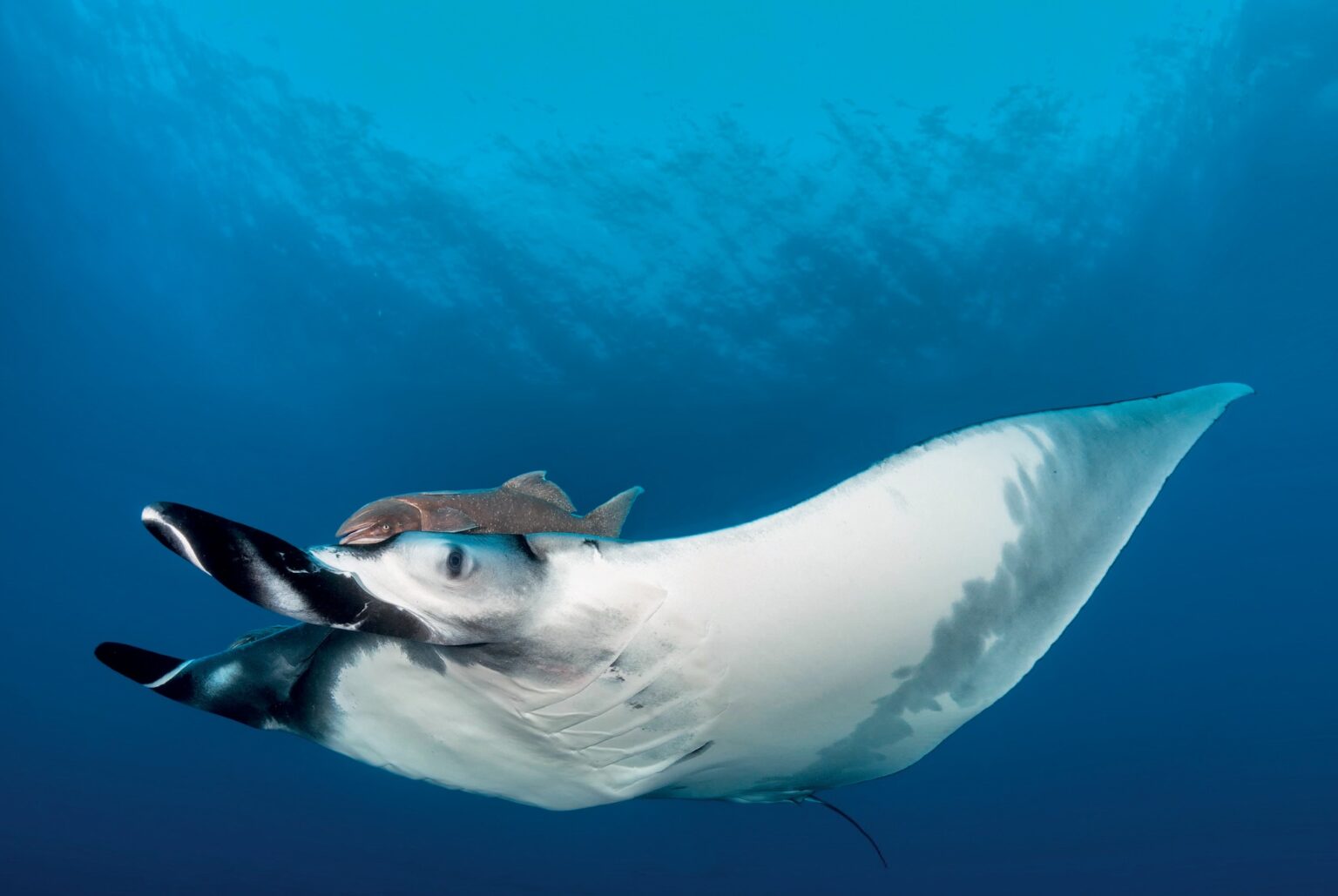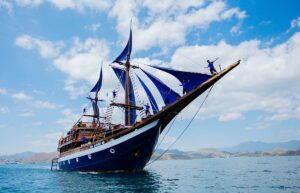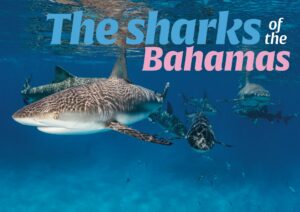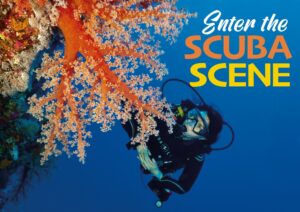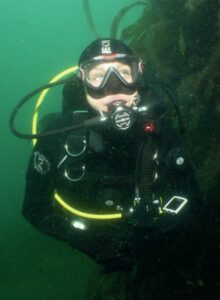Encounters with large marine creatures are always special, butfew are as endearing and downright awesome as being inthe presence of the giant oceanic manta ray (Mantabirostris), as Don Silcock explains.
Introduction to the Giant Oceanic Manta Ray
Huge creatures with wingspans of up to eight metres, oceanic mantas are a truly pelagic species that are known to travel incredible distances across the open ocean and penetrate They are in constant motion throughout their entire 40-plus year lifespan – never stopping, never resting and constantly hungry because of the high metabolic rate all that perpetual movement produces. Oceanic mantas are planktivores and to satisfy that hunger, they migrate from one ‘productive area’ as it peaks to another, such as the annual coral spawning in Ningaloo in Western Australia and that of the little tunny, north of Isla Mujeres in Mexico’s Yucatan.
Interestingly, recent research has revealed that the majority of their feeding occurs in deep water as they move from one productive area to another. All of which means that random encounters with them are serendipitous at best and if one does happen, you can thank the manta gods – but if you want a bit more certainty, you need to go to one of those productive areas at the right time of the year!
IUCN Red List Status
Because they are so large and capable of rapid bursts of speed when threatened, oceanic mantas have few natural predators. Rather it is human activity that has causedthem to be assessed as Endangered on the International Union for the Conservation of Nature’s (IUCN) Red List of Threatened Species. Female mantas become sexually mature in the early teens and give birth to a fully-formed pup (sometimes twins…) every three to five years – a cycle that evolved around not having many predators and means that on average, a female with produce fourto five pups in her life.
In recent decades, the rise of the insidious and bogus practice of selling their gills as a form of traditional Chinese medicine known as pengyusai, to treat health issues ranging from acne to cancer, combined with over-exploitation generally and mantas caught as by-catch, has resulted in an estimated overall reduction in the global population of oceanic mantas of at least 65%. That depletion in overall population, combined with the slow reproductive cycle, is what has pushed them in to the Endangered area!
Oceanic Manta Encounters
Oceanic manta are intelligent creatures with the largest brain-to-mass ratio of any fish. They are also highly social, and it is believed their interactivity has contributed to that overall intelligence. The most obvious sign of that is their curiosity, which is also what makes encounters with them so special because they will come to you if you play your cards right! The sight of such a large and incredibly graceful creature approaching you can be somewhat intimidating the first time it happens, but they are indeed gentle giants and mean you no harm.
Where to Dive with Oceanic Manta Rays
Personally, I have been in the water with these giant creatures in Mozambique, Tubbataha in the Philippines, Raja Ampat in Indonesia and both the Yucatan and the Archipiélago de Revillagigedo in Mexico.
By far the best encounters were at Archipiélago de Revillagigedo, the group of four islands located in the Pacific Ocean, some 600km from the west coast of Mexico, usually referred to simply as Socorro. This area is where the California Current meets the Equatorial Current, which creates an incredibly complex and highly productive transition zone – prime real estate for oceanic mantas!
The two best places for encounters are Cabo Pearce on the island of Socorro and El Boiler on the island of San Benedicto.
Cabo Pearce is a long ‘finger’ formation located on the eastern side of the island created by lava flow from when Socorro was an active volcano. Underwater that finger extends right out into the deep surrounding waters.\
El Boiler is a tremendous place for oceanic mantas because they use the pinnacle as a cleaning station and the best way to dive it is to stay shallow and conserve air as you make your way around it waiting for them to appear. The oceanic mantas at both sites are quite used to divers and seem to really enjoy putting on a show for their visitors!
This article was originally published in Scuba Diver ANZ #53.
Subscribe digitally and read more great stories like this from anywhere in the world in a mobile-friendly format. Link to the article
